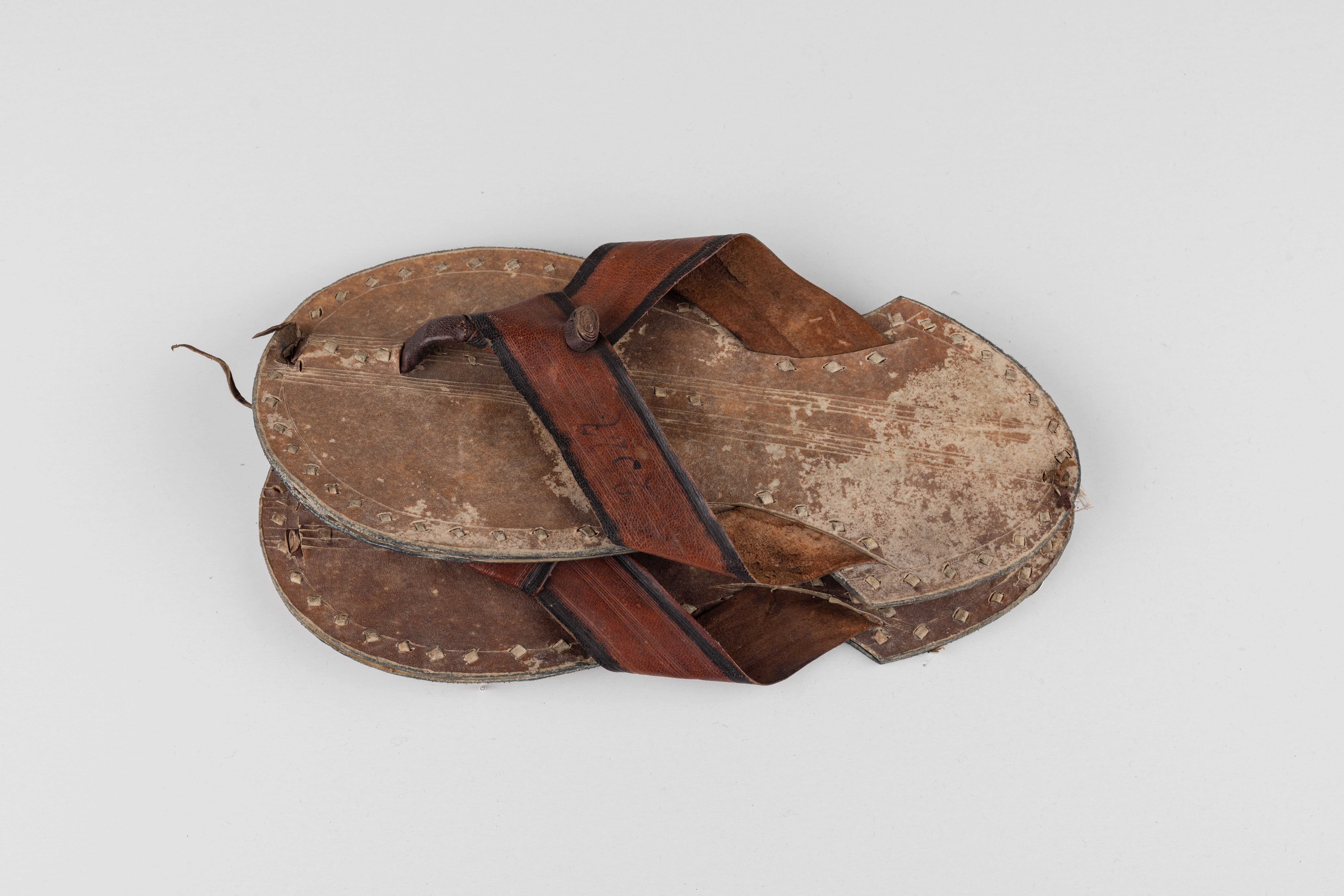A pair of thong sandals with a strap from a broad, flat leather band. The strap is red, dyed black on the edges and embossed with fine lines. The strap is fixed to the sole in the back by being put into a slot and sewed up. The toe separator/thong consists of a thick, roundish leather band with a coiled knob on the end that, in turn, pierces the strap and thus connects it with the sole. Moreover the strap is crossed over and wrapped around the thong. The sole is seamed together from three layers of leather and provided with an ornamental seam.
The object is part of the bundle that came in March 1910 as a gift from Oberleutnant (first lieutenant) Picht into the collection of the Gewerbemuseum (Museum of Applied Arts) Ulm. The donor was Erhard Picht (1882 - 1910) who acted from 1900 on for the field artillery regiment "König Karl (1. Württembergisches), Nr. 13" in Ulm/Ludwigsburg and worked starting in 1904 as director in the Westafrikanische Pflanzungs-Gesellschaft "Victoria" (West African plantation corporation) in Cameroon. 1908 Erhard Picht had a collection of African items transported to Berlin where he lived sporadically. Among them were probably also objects that came to Ulm in 1910. A part of this collection he sold already in 1908 to the ethnological museum in Berlin. In April 1910, Erhard Picht died from malaria in Berlin shortly after his donation to the Gewerbemuseum Ulm.
It is possible that Erhard Pichts's brother Heinrich was involved in the processing of the donation or that he was even concerned in the collection of the African objects. Heinrich Picht (* 1884) worked as a planter in Cameroon since 1902 and founded in 1907 the Deutsche Kautschuk-AG (German Rubber Corporation, from 1923 on named Ekona AG) with main office in Berlin. Around 1903 he obtained the order to gain local workers for the plantations by bargaining with the native tribe patriarchs. For this purpose, he set out on a journey through the North Western Cameroon resp. the present province Northwest Region. Some of the objects from the donation come from the region where Heinrich Picht was on his way.
en

